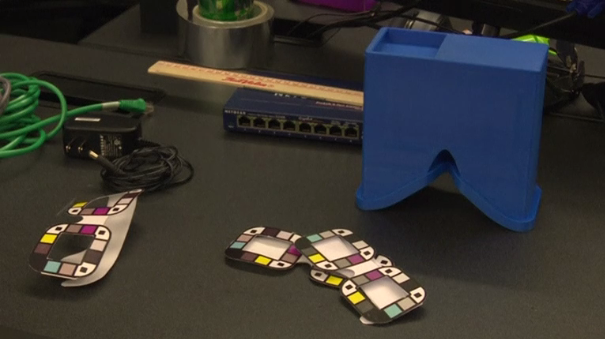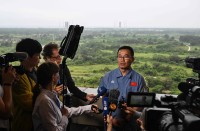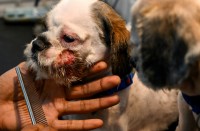
SEATTLE, USA (Reuters) — In a laboratory in the Computer Sciences building at the University of Washington a photograph is being taken.
The blue box was produced by 3D printing and the phone being slid into it is just a standard smartphone.
Its camera is going to take a ‘selfie’ of the subject’s eyes.
The photograph is analyzed using an app called BiliScreen being developed in the lab.
It evaluates the color of the white of the eye surrounding the pupil for its level of bilirubin, the compound responsible for the yellowing of the eye in jaundice and an indicator of possibly serious medical conditions, such as pancreatic cancer.
In this instance the app detects a normal level of bilirubin.
“One of the particular applications we’re interested in is for people with pancreatic cancer,” Project lead Alex Mariakakis told Reuters.
“Pancreatic cancer, sadly, has a very low 5-year survival rate and that’s because the symptoms of pancreatic cancer often get detected too late and options for treatment are very limited,” he said.
By the time jaundice appears in the eyes of pancreatic cancer victims the disease is already well-established.
The research team hopes that Biliscreen will be able to detect abnormal bilirubin levels before they are visible to the naked eye.
The project has special significance for one research team member, Dr. Jim Taylor, whose father died o pancreatic cancer.
“I have a very close colleague who actually has survived with pancreatic cancer and I started thinking this might be a wonderful thing we can screen people with that could, hopefully, in the future, pick up people earlier and make the outcomes better in people with pancreatic cancer,” he said.
Taylor helped design the first BiliScreen study which accurately measured bilirubin levels in 90 percent of its 70 subjects.
He is now helping design the second stage of testing, noting that the initial study was “just a proof of concept study, showing that we could fairly accurately measure bilirubin levels by using photographs taken with a smartphone app.”
“The next study should be a larger study with people who have no jaundice up to mild jaundice and then more severe jaundice, and we will take that information and make what we hope will be a robust algorithm so that we can really accurately predict, across a wide group of people, jaundice,” he said.
BiliScreen is designed to be an easy-to-use, non-invasive, tool that can be used by both medical professionals and an untrained person who wants to determine whether they should consult a medical professional.
One of the great advantages of BiliScreen is that it should get better, the more it is used, as Mariakakis explained. “BiliScreen is a data-driven algorithm, which basically means if we see enough cases of jaundice for different levels of bilirubin then we can have the algorithm learn how to see those different levels,” he said.
Researchers are currently testing different ways of guaranteeing colour accuracy in bilirubin measurement.
For Alex Mariakakis the dream exists for BiliScreen to be a life-changer.
“Down the line, with the right kind of ecosystem, if we could have just one of those cases, where someone serendipitously just decides to download an app and gets a diagnosis and ends up getting the treatment they need earlier, that would be very impactful for me. But we’re quite a ways away from there,” he said.
On the way to that dream, the next step is a larger clinical study and improving the app to remove the need for accessories like the color calibration ‘glasses’ used.







